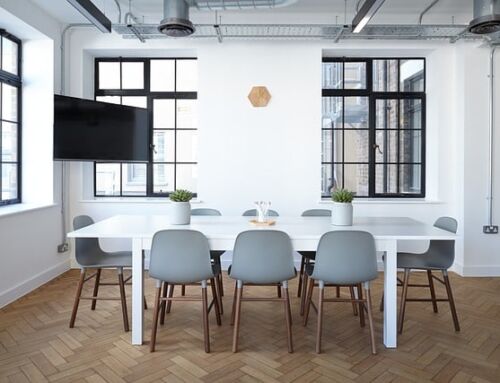Take a look around your office. Who’s happy?
If everyone looks like they’d rather be at the dentist than at their desks, you’ve got a problem. You may offer competitive salaries, but money isn’t everything when it comes to workplace happiness. Workplace happiness doesn’t always seem important on the surface (after all, work is work!), but most people spend a third of their day doing their job, which can add up to a lot of unhappiness during their lives if they’re unsatisfied at work. But why should this matter to employers?
Happy people are more pleasant to be around, but there are other business benefits to a happy workforce besides a more positive environment. Happy employees are more creative, innovative, and dedicated, and they’re more likely to stick around long-term. Plus, a happy workplace is usually a more productive workplace. Does your office inspire positivity? Here are 7 proven factors (aside from salary) that determine employee happiness levels.
1. Recognition
Everyone wants to be noticed when they’ve done a good job. Happy employees get consistent feedback and recognition for their work. Constructive feedback is important, but it’s easy to forget recognition and to gloss over what your team is doing well. Remind them of the contribution they’re making, and make an effort to give out both positive and constructive feedback on a regular basis.
2. The Right Benefits
There are so many benefits you can offer your employees beyond the basics of health insurance and a 401(k) program. Perks like transit passes, gym memberships, and wellness programs can enhance well-being and make your employees’ lives easier. Offering other benefits, like social events, is another great way to bring your team together and boost satisfaction.
3. Interesting Work
There’s nothing worse than being bored at work, and employees who are consistently unsatisfied with work that doesn’t engage won’t stick around long. Work isn’t always going to be fascinating and fulfilling, but it’s important to incorporate interesting projects into the day-to-day work to help keep people engaged. Does a team member have a knack for design? Bring them in on your next product design meeting and spark their innovation!
4. A Healthy Work-Life Balance
Very few people want to live to work. Life is messy and doesn’t always fit neatly into the 9-5 workday, which is why employees that have more flexibility in their schedules tend to be happier with their overall work-life balance. The ability to fit work around life is one of the perks of a mobile society, and many companies are recognizing the benefits of a flexible schedule for employee happiness and productivity. A healthy work-life balance also includes time off, which is critical to preventing employee burnout.
5. Growth Potential and Professional Development
Let’s face it: no one wants to be doing the same job forever. Most people crave growth and professional development in the workplace. You can help provide this by giving exceptional employees opportunities for new responsibilities and promotions, and offer development opportunities such as conferences, classes, or tuition reimbursement.
6. An Inclusive, Transparent & Communicative Environment
Cubicles seal off communication and inclusion, which is one reason many companies are moving toward open office plans. Employees who work in a transparent and communicative environment usually enjoy better relationships with management and colleagues, and feel more invested in the overall goals of the organization. A sense of purpose emerges from clear communication, and will make employees feel more engaged and valued overall.
7. Autonomy
Micro-management is one easy way to make employees unhappy. Your management team should be emotionally intelligent and adaptable to avoid falling into the micromanagement trap. Trusting your team to do their job without constant monitoring is one of the hallmarks of a good leader. So how do you supervise without hovering? First, you need to have a team you can trust—and ways to check in on a regular basis. Autonomy, combined with clear goals and expectations, is part of the recipe for a happy and productive workforce.
Getting Started
Now that you know what a happy workplace looks like, take a moment to assess your own culture. Do employees thrive, or burn out? What could you change to create a culture of engaged, happy people? Spotting areas for improvement is one of the first steps toward creating a healthier, happier culture. Not sure what’s wrong? Ask your team! With a little work, your company could be the next place where everyone wants to work.
Download the eBook and find out what makes people happy to go to work every day and give their best, with real answers from employees across the world.
Image licensed from Depositphotos.com






These are immensely realistic factors. Another one is fairness or the perception of fairness in employee treatment by supervisors.
Totally dig the point about ‘trusting the team’ and not get into micro management.
Great article!